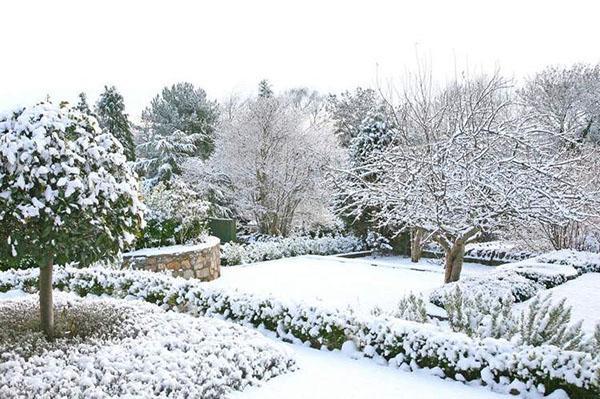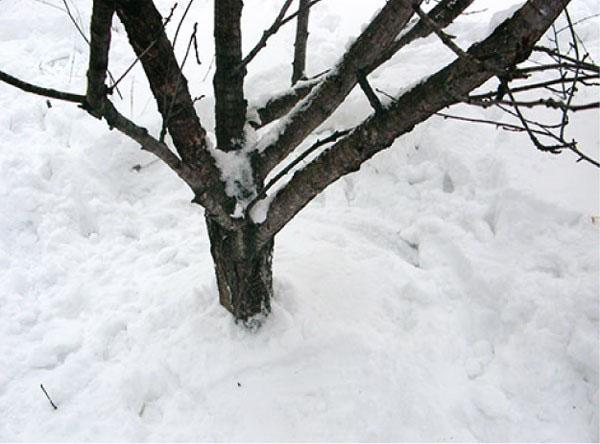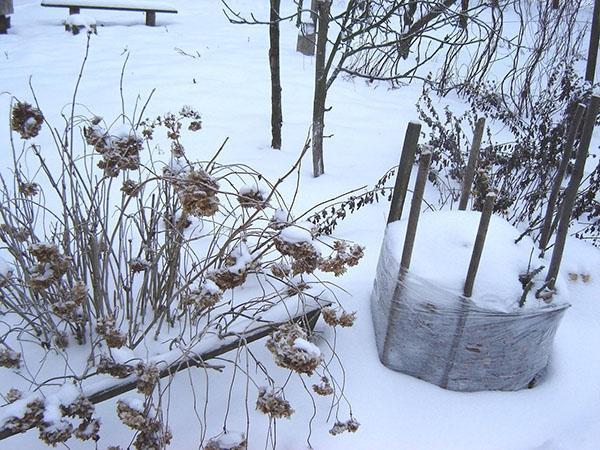Pleasant chores of true gardeners in January
 So the real winter has come - January. Long cold nights, icy wind, mountains of white snow. Unfortunately, such a landscape can not always be seen outside the window. Much depends on the climatic zone in which we live. In the northern part of Russia, frosts are always stronger and there is more snow, and in the southern part it rains more often. Residents of Ukraine have not yet had time to freeze this year, but they await January frosts with trepidation.
So the real winter has come - January. Long cold nights, icy wind, mountains of white snow. Unfortunately, such a landscape can not always be seen outside the window. Much depends on the climatic zone in which we live. In the northern part of Russia, frosts are always stronger and there is more snow, and in the southern part it rains more often. Residents of Ukraine have not yet had time to freeze this year, but they await January frosts with trepidation.
According to the observations of scientists, January is the month when garden trees and shrubs are in complete winter rest. During this period, they gain strength to bear fruit again. Therefore, summer residents do not relax in January and diligently look after the sleeping garden.
Protective structures from winter cold

In areas where January is a rather mild month, gardening work practically does not stop. They include such activities:
- snow retention facilities;
- loosening dry land;
- additional shelter for shrubs and young seedlings.
 Since there is little snowfall in such regions, plants need additional insulation structures. They are made from spruce branches, dry leaves or twigs. In case of sudden snowfalls, artificial snow holders are installed in the garden - special shields.
Since there is little snowfall in such regions, plants need additional insulation structures. They are made from spruce branches, dry leaves or twigs. In case of sudden snowfalls, artificial snow holders are installed in the garden - special shields.  In addition, brushwood is laid out in open areas of the garden and alleys are compacted, directing them across the wind. Such preparation will ensure the retention of the snow cover and the warming of the plants.
In addition, brushwood is laid out in open areas of the garden and alleys are compacted, directing them across the wind. Such preparation will ensure the retention of the snow cover and the warming of the plants.
Even if it seems that snow is not expected, such structures are worth preparing. Due to global warming, the climate has become changeable and unpredictable. It is better to be always ready for surprises than to solve big problems later.
Beware - Hungry Rodents!
 Wherever we live, in the southern latitudes or in Siberia, in January the garden is visited by uninvited guests. Cute, fluffy creatures called hares. So they don't damage the bark fruit trees, you should equip a protective "armor". If this is not done, animals can peel the bark in a circle from the trunk of a tree or shrub up to 1 meter high.
Wherever we live, in the southern latitudes or in Siberia, in January the garden is visited by uninvited guests. Cute, fluffy creatures called hares. So they don't damage the bark fruit trees, you should equip a protective "armor". If this is not done, animals can peel the bark in a circle from the trunk of a tree or shrub up to 1 meter high.
 In an area where snow rarely falls, it is fairly easy to spot regular visits from hares. This is noticeable by the following features:
In an area where snow rarely falls, it is fairly easy to spot regular visits from hares. This is noticeable by the following features:
- young stalks of perennial plants are eaten at the very root;
- the bark of fruit trees and bushes has been destroyed;
- traces of dug holes appear in front gardens and lawns.
In the area where the snow cover lies until spring, in addition to these signs, traces of furry animals are clearly visible. If rodents often visit the garden plot, it is advisable for the plants to make fences.  For this, you can use a metal mesh up to 130 cm high.
For this, you can use a metal mesh up to 130 cm high.
The fence should be dug into the ground 30 cm and installed at an angle to the garden. This technology will prevent hares from digging and entering the restricted area.
A wire fence is also installed around the seedlings, but without deepening into the ground. The height of the building is 100 cm.In addition, the trunks are coated with a special mixture of mullein, clay and carbolic acid. Such "not tasty" protection will scare away fluffy rodents from the garden, and they may forget their way here.
Some summer residents, to scare away hares, wrap the trunk with a metal mesh with bells. Such "garlands" effectively drive away fluffy animals from fruit trees.
During milder winters, dormant trees can be inspected in January. If empty nests, cocoons or frozen cobwebs are found on them, they must be carefully removed. After that, it is better to burn the "trophy" in a fire, so as not to leave any chance for garden pests. This procedure will reduce the reproduction of harmful insects that wake up in early spring.
The right time for ideas
 When the ground rests under snow and it's mid-winter outside, it's time for the gardener to think about the upcoming harvest. Sitting by the fireplace, under the pleasant crackle of burning wood, one can build ideas. On a blank sheet of paper, it would be nice to sketch a diagram of the backyard area in order to think about where to plant what. Plan your time and landing dates so you don't miss anything. Consider purchasing new varieties of fruit trees or ornamental shrubs.
When the ground rests under snow and it's mid-winter outside, it's time for the gardener to think about the upcoming harvest. Sitting by the fireplace, under the pleasant crackle of burning wood, one can build ideas. On a blank sheet of paper, it would be nice to sketch a diagram of the backyard area in order to think about where to plant what. Plan your time and landing dates so you don't miss anything. Consider purchasing new varieties of fruit trees or ornamental shrubs.
 Thanks to clear planning, it is much easier to navigate among your own plantings. And when spring comes, everything will be under control. Therefore, cherishing precious time, you should not waste it when January is outside the window.
Thanks to clear planning, it is much easier to navigate among your own plantings. And when spring comes, everything will be under control. Therefore, cherishing precious time, you should not waste it when January is outside the window.